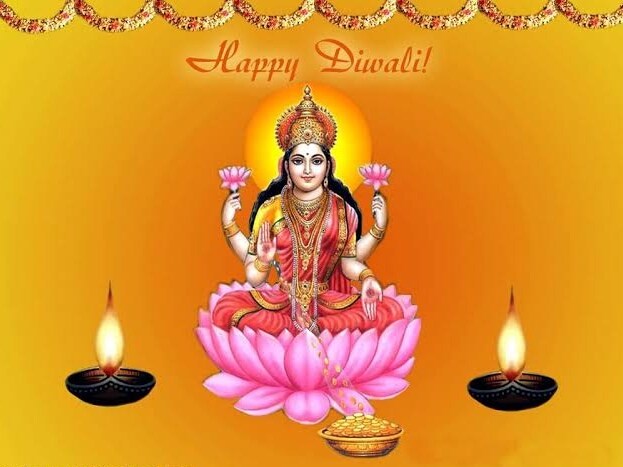
MUMBAI, 12 NOVEMBER, 2020 (GPN): The word Diwali comes from the Sanskrit word deepavali which means ‘rows of lighted lamps’. On the occasion of Diwali, houses, shops and public places are decorated with small lamps called diyas.
As per the Hindu almanac, the festival of lights falls on the day of Amavasya, or new moon, on the 15th day of Kartik month.As per legend, Diwali is celebrated to mark the return of Lord Rama and Sita to Ayodhya after 14 years of exile. Some celebrate the festival in honour of return of Pandavas after 12 years of vanvas (exile) and a year of agyatvas.
Also, as per legend, Diwali is associated with the story of Yama and Nachiketa on the Kartika Amavasya.
In Jainism, Diwali also marks the nirvana or spiritual awakening of Lord Mahavira on 15 October, 527 BC. In Southern India, the day is celebrated as when Lord Krishna defeated the demon Karakasura, while in western India, it is the day Lord Vishnu sent the demon King Bali to rule the underworld.
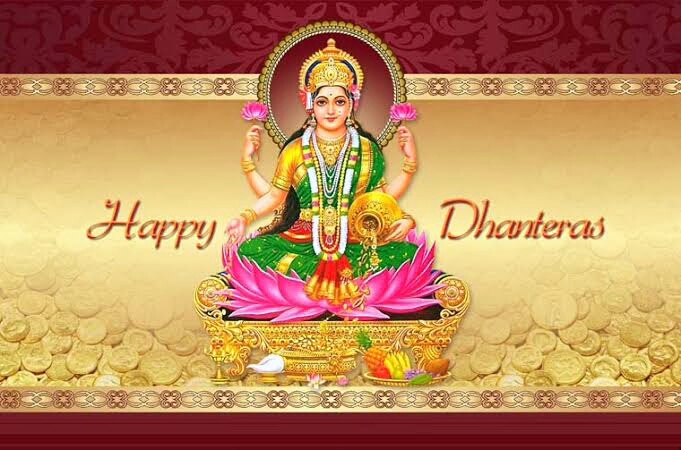
While most people know why Diwali is celebrated, many don’t know that it actually begins with the worship of cows. Vasu Baras is a day dedicated to worshipping the cow and marks the 1st day of Diwali. According to the Hindu calendar, the 12th day of Krishna Paksha in the month of Kartik is Vasu Baras. This year 2020, that day is November 12.
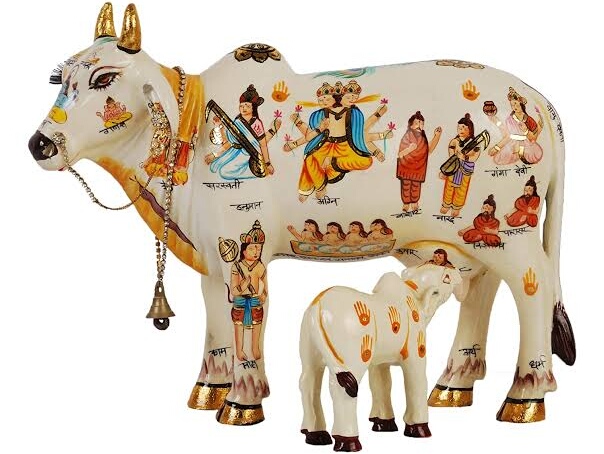
In Hindu mythology, cows are considered sacred and an incarnation of God. The day is also referred to as Vasubaras, Govatsa Dwadashi or Nandini Vrat in various regions. However, the festival is most prominently celebrated in the state of Maharashtra where it is associated with honouring cows and calves.The origin of this festival is related to the mythology of Samundra Manthan, a time when Gods and Demons were vying to find amrut or magical nectar by churning the ocean. The divine cow Kamdhenu emerged in this process as a gift from the seven great Gods. Kamdhenu is associated with blessings of motherhood, fertility, divinity, and sustenance. The divine animal is also closely associated with Lord Krishna, Vishnu avatar.
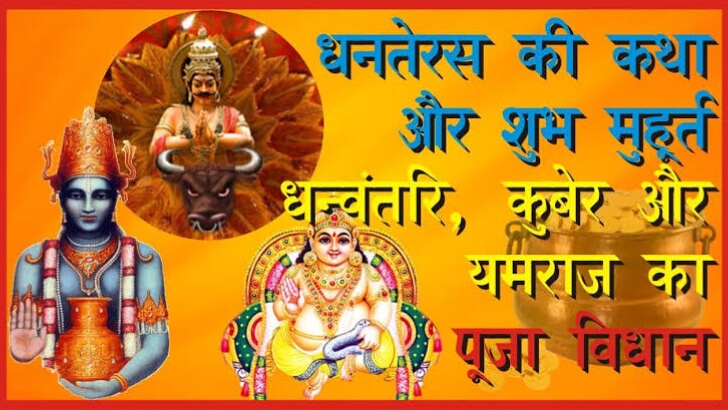
Than comes Dhanteras.The name Dhanteras is formed of two words where ‘Dhan’ means money and ‘Teras’ means thirteenth. The day is celebrated on the thirteenth day of Krishna Paksha in the Vikram Samvat Hindu calendar month of Kartik. This year, the day of wealth, Dhanteras is going to be celebrated on the 13th of November.On this day, people worship Goddess Lakshmi, Lord Kuber, Goddess Dhanvantri or God Dhanvantaru. As it is the god of wellbeing and good health and as we all know “Health is Wealth”.
Dhanvantri is God of Ayurveda who imparted the wisdom of Ayurveda for the betterment of mankind, and to help rid it of the suffering of disease. buy precious metals like silver and gold which are considered to be auspicious on this day. Worshipping Lord Kuber is considered quite auspicious on this day. To perform the Dhanteras puja, you can take a copper Kalash or if you don’t have one, you can use a Kalash made of mud. You then have to put silver coins and fill the Kalash with water. Now, put a tika on the Kalash while chanting ‘Om Kuber Namah’. The puja should be done while you’re sitting in the North direction. This is because North is the direction where Devi Lakshmi is said to reside. It is also believed that worshipping Goddess Lakshmi on this day will help you stay strong financially throughout the entire year. Leave the Kalash as it is overnight and take out the coins the next day. If it’s possible, you can keep one coin in the Kalash at all times. It is considered to be auspicious.

An ancient legend ascribes the occasion to an interesting story about the 16-year-old Nachiketa son of King Hima. His horoscope predicted his death by snake-bite on the fourth day of his marriage which was than the third day of Krishna Paksha according to Hindu Calendar or third day of Diwali. On that particular day, his newly-wed wife did not allow him to sleep. She laid out all her ornaments and many gold and silver coins in a heap at the entrance of the sleeping chamber and lit many lamps. Then she narrated stories and sang songs to keep her husband from falling next day, when Yama, the god of Death arrived at the prince’s doorstep in the guise of a serpent, his eyes were dazzled and blinded by the brilliance of the lamps and the jewellery. Yama could not enter the Prince’s chamber, so he climbed on top of the heap of gold coins and sat there the entire night listening to the stories and songs. In the morning, he silently went away. Thus, the young prince was saved from the clutches of death by the cleverness of his new bride, and the day came to be celebrated as Dhanteras.
The following day that is the fourth day of Krishna Paksha came to be called as Naraka Chaturdashi (‘Naraka’ means hell and Chaturdashi means 14th). So this year it comes on 14th November and it depicts Victory of Light (Life) over Darkness (Death) that happened because of Prayers and Wealth, So immediately after Narka Chaturdashi Comes Goddess Shree Laxshmi Pujan. Naraka Chaturdashi is also known as ‘Yamadeepdaan’ as the ladies of the house light earthen lamps or ‘deep’ and these are kept burning throughout the night glorifying Yama, the God of Death. Since this is the night before Diwali, it is also called ‘Chhoti Diwali’ or Minor Diwali.
According to sources, it is considered auspicious to keep Mangalik Kalash, or earthen pot, covered with unpeeled coconut on both side of the main entrance of the house.
Till now we heard story of ‘Chhoti Diwali’ or Minor Diwali. Now the Main Diwali is celebrated with Abhaynga Snan Celebrations and praises to the Mother and Deity Shree Laxshmi Devi Goddess of wealth and prosperity (Aishwarya).According to mythology, Narak Chaturdasi signifies the victory of good over evil. And thus, the early morning bath signifies the destruction of evil within us. It is also believed that since abhyang snan is taken before the sunrise, it is as sacred as bathing in the river Ganges. Here’s how to perform the ritual –
Wake up early in the morning on this auspicious day (preferably before sunrise),Massage your entire body with sesame oil or coconut oil. Abhyanga snan provides you with numerous health benefits. During Diwali, before you go for a bath, you need to massage your entire body with sesame oil. Because Diwali is celebrated during the winter, using sesame oil increases heat in the body and thus, help you to stay warm. It acts so by lowering the amount of pitta in the body.. Also, apply few drops of oil on the scalp.Wait for around 30 minutes before you go for a bath so that the oil is absorbed by the body.
While bathing, apply ubtan or ayurvedic mixture and massage it thoroughly over the entire body.Scrub it and rinse with water properly so that the mixture is washed off.
Now, bathe as you usually do using a normal soap (some people skip this step).
Diwali falls on Saturday, 14th November 2020.Diwali is celebrated during the Amavasya of the Kartik month of the Hindu calendar. In South India, Diwali marks the victory of good over evil as Lord Krishna defeated the demon Narakasur. In some parts of the country, it is also believed that Diwali marks the celebration of Goddess Laxmi’s wedding with Lord Vishnu. Few legends say Goddess Laxmi was born on the full moon day of Kartik, and that is why we celebrate the day.
For those who celebrate Lakshmi Puja, mostly in north, central and west India, the puja Muhurat for performing Lakshmi puja on Diwali is between 05:28 pm and 07:24 pm. During this time, the Pradosh Kaal and Vrishabh Kaal muhurats coincide. All over the country. Amavasya tithi begins on November 14 from 2:17 pm and ends at 10:36 am on November 15, 2020. The most auspicious time to do Diwali Puja is after sunset. The time period after sunset is known as Pradosh. This year Pradosh Kaal is from 05:28 pm to 08:07 pm. For Mumbaikars, the best muhurat auspicious time is between 6:01 pm to 8:01 pm.
The Abhyanga Snan is mandatory before performing vidhi of Mother Shree Laxshmi Pujan.According to Hindu beliefs, Lord Ganesha is invoked before any god or goddess when performing a puja or Havan. Therefore, you will also have to place a Ganpati idol on the right side of the ‘Kalash’ (making sure that it is the South-West direction). As per rituals in our Hindu religion, welcome the lord with putting a Haldi-Kumkum tilak on the forehead. Offer some rice grains to the Ganpati idol.
Once the Lakshmi-Ganesha idols are strategically placed, you can also seek the blessings of the god and goddess by keeping your books, pen or any such personal belonging (you feel is related to your profession). With all this done, now is the time to light the lamp.
Light a special Diwali Diya, and place it on the ‘puja ki thali’. Also, with it put some more rice grains kumkum and flowers. You will also have to remember to keep aside a glass of water that will be used during the puja. Now, as you proceed to perform the puja—start with putting a ’tilak’ on the ‘Kalash’, also apply it on a glass of water which you kept it aside for puja. Offer some flowers also.
Now starts the process of invoking the goddess. If you know how to correctly chant the Vedic mantras of Lakshmi Maa—sing it, if you can’t—worry not. Take some flowers and rice grains in your hand, close your eyes with full devotion bow your head down before the goddess and chant her holy name. Afterward, offer the flowers and rice in your hand to the goddess.
Once the goddess is invoked, take the Lakshmi idol and put in a plate, while bathing it with water. Put the ‘Panchamrit’, and clean the idol again with pure water. Now, carefully clean the idol, wipe out the water and place it on the ‘Kalash’.
Now is your turn to apply Haldi-Kumkum tilak to the mother goddess, and yes don’t forget the rice grains. Welcome the goddess with a freshly-made garland of flowers. You can also offer some marigold and Bel. To get that aromatic feel, light up some incense sticks before the goddess.
You will then have to please the goddess offering her some sweets, as it is the festival of wonderful mithais. Place the coconut in front of the goddess. You will also have to place the supari on a supari leaf—again beautifying it with some Haldi-Kumkum and rice grains. Also add some puffed rice, coriander seeds, and cumin seeds. What follows is, offering the Mother goddess your favourite Diwali mithai, fruits, money, or any precious jewellery item.
Lastly, the entire puja culminates with a Lakshmi Aarti, where everyone joins in the celebratory mood and prays to the Mother goddess together. With folded hands, we immerse ourselves before the goddess Lakshmi and in our honest askings —pray for prosperity and well-being.
Close your eyes, fold your hands and immerse yourself in the bhakti of Goddess Lakshmi and Lord Ganesha.
People offer prayers and worship Goddess Lakshmi for prosperity on the day of Diwali. The idols of Goddess Lakshmi and Lord Ganesha are placed on raised platform on a red cloth. Silk clothes and jewellery are offered at the time of puja.Deepawali, the festival symbolises victory of light over darkness. On this day, people decorate their homes, workplace and offices with marigold flowers, mango and banana leaves.
On Diwali, people decorate their houses, offer prayers, exchange sweets and burst crackers.They also make colourful rangolis. Children also seek blessings from elders on this day.
To sum up Diwali is the five days festivity which begins on Dhanteras and ends on Bhaiya Dooj. Here are the complete details about the five days of Diwali week:
Day 1: Govatsa Dwadashi is considered as the first day of Deepavali. This year, Govatsa Dwadashi is on Thursday, November 12, 2020. It is celebrated one day before Dhanteras. On this day cows and calves are worshipped. In Maharashtra, Govatsa Dwadashi is known as Vasu Baras.
Day 2: This year Dhanteras Puja will be observed on Friday, November 13, 2020. Dhanteras Puja muhurat is from 05:28 pm to 05:59 pm.
Day 3: Kali Chaudas is observed during Chaturdashi Tithi during Diwali festivity. This year Kali Chaudas will fall on the same day from 11:39 pm on November 13 to 12:32 am on November 14.
Day 4: Lakshmi Puja is done on the day Diwali during Pradosh Kaal which starts after sunset and approximately lasts for 2 hours and 24 minutes. This year, Lakshmi Puja is on Saturday, November 14, 2020. Lakshmi puja muhurat is from 05:28 pm to 07:24 pm.
Day 5: Govardhan Puja is the day when Lord Krishna defeated God Indra. It usually falls the next day after Diwali Puja. Gowardhan Puja is also known as Annakut Puja. The same day in Maharashtra is celebrated as Bali Pratipada or Bali Padva. The day after Diwali is also known to be the New Year as per Hindu Calendar.
Day 6: On Bhaiya Dooj, sisters perform Tika ceremony and pray for their brothers long and happy lives. This year Bhai Dooj is on Monday, November 16, 2020.
Since we are not shopping nearly as much as one used due to the fear of COVID-19, it does not mean that we can completely ignore the prevalent threat of plastics. Make sure to keep the use of plastics to a bare minimum. India is a country with a high amount of remote, unaware people who burn crackers while being oblivious of its immediate and late side effects. Creating awareness is the best counter to this problem.
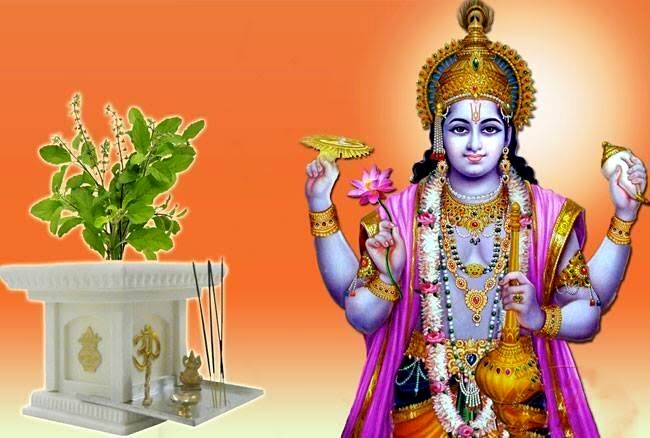
Just after the six days of Diwali or Deepawali comes on the 11th – 12th Day Mother Tulsi Pujan.With a vast mix of different cultures and traditions, India is quite a salad bowl. There is a very famous, and very ancient ritual that is still practiced by members of the Hindu community. This ritual, known as Tulsi Vivah, is the ceremonial marriage of the Tulsi plant (holy basil) to the Hindu God Vishnu, or to his avatar, Shri Krishna.
In India, this mythological wedding also signifies the end of the monsoon season, and the beginning of the wedding season for Hindus.This ceremonial festival is celebrated between the eleventh or twelfth lunar day in the Hindu month of Kartik (also known as Prabodhini Ekadashi) and the Full Moon Day of the month (also known as Kartik Poornima). Some Hindu communities celebrate the festival for a period of five days, ending celebrations on the Full Moon Day of the Kartik month.
Tulsi Vivah is performed on the 12th day (also called Dwadashi).
In the Hindu community, the Tulsi plant is considered to be a holy plant (the Holy Basil), as it symbolises purity. In ancient times, it was also famous for its medicinal properties, and so, it is commonly found in almost every Hindu house.Since the Tulsi plant is believed to be an incarnation of Goddess Lakshmi, who is believed to be Lord Vishnu’s wife, she is often referred to as ‘Vishnu Priya’, literally meaning ‘the beloved of Vishnu”.
The festival is mostly celebrated by either unmarried women looking for a suitable match, or women who are having trouble getting married or whose marriage may be getting delayed for some reason, or for couples having problems getting pregnant.
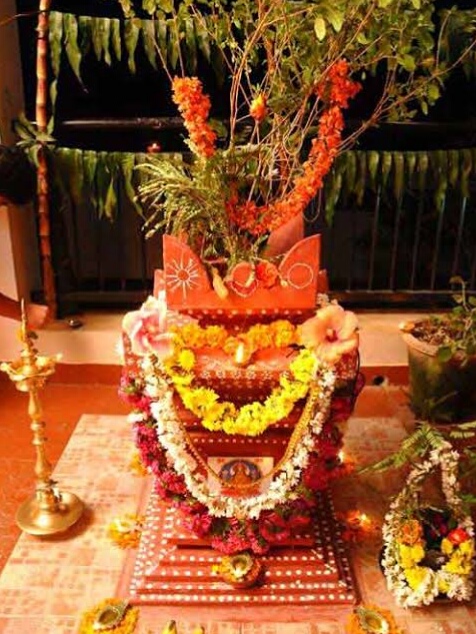
MOTHER SHRI TULSI PUJAN Customs and Rituals:
As part of the tradition and custom, a Tulsi plant is dressed in a red saree. The branches of the plant are adorned with red and green bangles. Kumkum, and red bindi are applied on the main stem. A mangalsutra (a necklace married women wear to represent their marital status), made of dried turmeric root, is also placed on the plant.
An image or idol of Lord Vishnu or Lord Krishna is placed next to the plant to represent the ‘groom’. The idol is dressed in a dhoti, and bathed and decorated with flower garlands before the ceremonial wedding.
The Tulsi plant and the idol of the Lord are tied together in matrimony with a Holy thread (called molli).
Female members of the family often observe a fast during the day of the festival, and only break it before the celebrations begin in the evening.Tulsi Vivah Date and Muhurat 2020
Tulsi Vivah 2020 -26 November
Tulsi Vivah Tithi – Thursday, 26 November 2020
Dwadashi Tithi Begins – 05:09 on (26 November 2020)
Dwadashi Tithi Ends – 07:45 on (27 November 2020).
HAPPY DIWALI CELEBRATE WITH CARE AND LOVE FOR PEOPLE AND LIFE (Animals, Flora and Fauna) AROUND YOU


Be the first to comment on "KNOW DIWALI OR DEEPAVALI CUSTOMS AND RITUALS BEFORE YOU CELEBRATE – HAPPY DIWALI TO ALL OUR READERS FROM GPN"